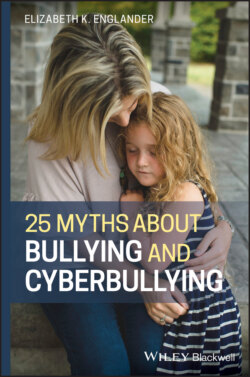Читать книгу 25 Myths about Bullying and Cyberbullying - Elizabeth K. Englander - Страница 15
To‐Do for Myth #2: Bullying causes suicide and homicide.
ОглавлениеThe truth: This relationship is neither simple nor direct.
What if your child isn't the type to talk with you about their social problems or their feelings? You can't force someone to disclose private thoughts to you, and punishing them for not talking will only push them further away. On the other hand, modeling what you're looking for – conversations about social relationships and feelings – can show your child that you're interested in their social lives and how they're feeling. So, take opportunities that come along to begin conversations. When a friend walks by, you could say to your child, “It was nice to see Henry again; are you two still as good friends as you used to be?” Don't be too concerned if all you get is a shrug or a grunt. These kinds of conversations are designed for the long haul; your goal is not just to get information – it's to show genuine interest and to encourage your child to talk when things get tough, because that is a key strategy that helps all of us to cope. After a while, you may begin to hear some real answers to your questions.
Talking to your child – and encouraging them to talk to you – pays off both in terms of the effort and in terms of your ability to detect serious problems when they arise. Many children (especially teenagers) are not inclined to talk with their parents about these issues, but many do ultimately respond when they're gently encouraged to do so. Don't forget, either, that you're not in this alone. Kids can also be encouraged to speak with others, such as their pediatrician, teachers, adult relatives, etc.
When you are talking, listen for changes or indications of depression or hopelessness. If anything alarms or worries you, consult with your pediatrician or family doctor about an assessment and getting help.
